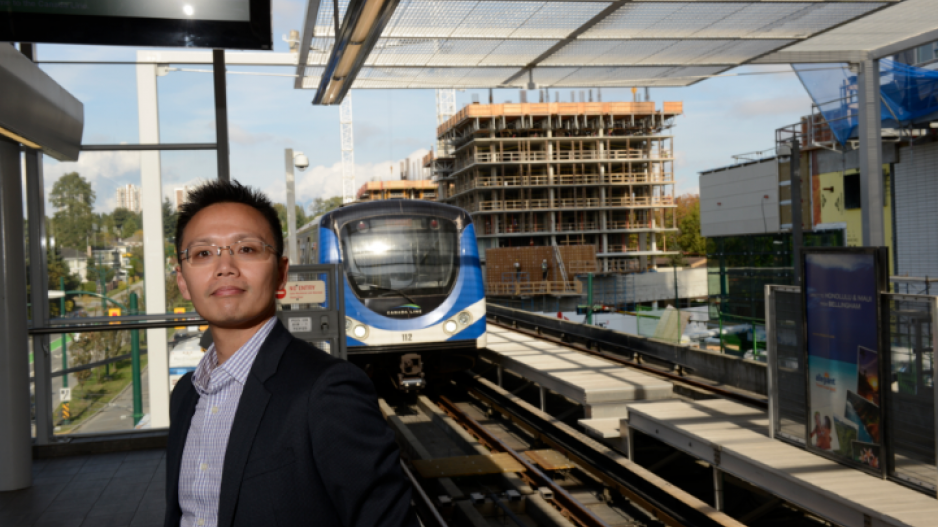The economic benefits of being linked to rapid transit are so important that Metro Vancouver developers are paying millions of dollars to upgrade old stations and even help pay for new stations.
TransLink is hoping to leverage that trend on 30 locations across its Skytrain, Canada Line and Evergreen lines by tapping into developers and recruiting retailers, according to Derrick Cheung, TransLink’s VP, strategic sourcing and real estate.
At the Marine Gateway station, for instance, developer PCI Group paid $2.5 million for access and safety improvements to the existing Canada Line station before it began construction of its five-story mixed-used complex that will soon surround it.
In Richmond, residential developers Polygon Homes, Concord Pacific and Pinnacle Properties agreed to a levy of $7,800 per housing unit they build nearby to pay for the $25 million Capstan Village, a new stop on the Canada Line. “This amounts to approximately $10 per square foot for the units,” Cheung said, who noted the site had been prepared for an eventual station when Canada Line was being planned.
"This is a win-win solution for everyone involved," said Richmond Mayor Malcolm Brodie. "It allows the city and TransLink to increase our transit infrastructure without placing additional burden on taxpayers."
In Coquitlam, a unique funding arrangement between the province, the city of Coquitlam, Morguard Real Estate Investment Trust, which owns Coquitlam Centre Mall, and residential developers was used to cover the $28 million cost of an extra stop, the Lincoln Station, on the Evergreen Line, which completes in 2016.
“We wrote a cheque for 50 per cent of the land lift [value]” said Hani Lamman, vice-president of development and acquisition with Cressey Development Group, which is completing three high-rise residential towers and a nine-floor office complex near the Lincoln Station. Money well spent, Lamman believes. “Transit is crucial,” he said.
Just how crucial was revealed in a 2012 Jones Lang LaSalle (JLL) study that looked at office buildings near Metro Vancouver transit stations.
The study found that even Class C buildings located within 500 metres of a Skytrain or Canada Line station outperformed Class A buildings further away.
A new Canada Line transit station has been roughed in at Cambie and 57th in Vancouver, Cheung said, and it is expected that private developers will be paying to build it. The site is located near both a 22-acre site listed for sale this month by Vancouver Coastal Health and Langara Gardens, where Concert Properties and Peterson Group are planning higher-density development.
TransLink may also cash in on development itself. It owns the Oakridge Transit Centre, a 13.8-acre site in the 900 block of West 41st Avenue, which could house a prime commercial or residential project. The city is expected to recommend density on the site next year. Cheung noted that there is no restriction on TransLink selling or leasing the land once the city decides on a land use policy.
“We look at anything that will reduce transit costs for taxpayers,” Cheung said.




